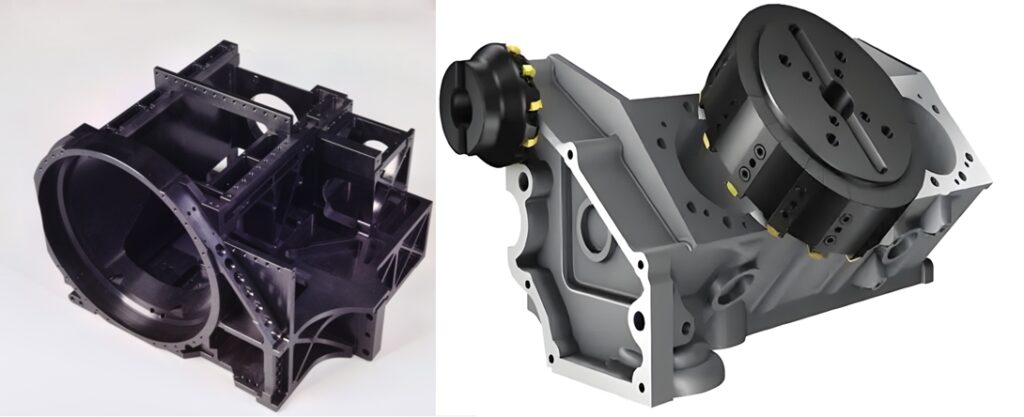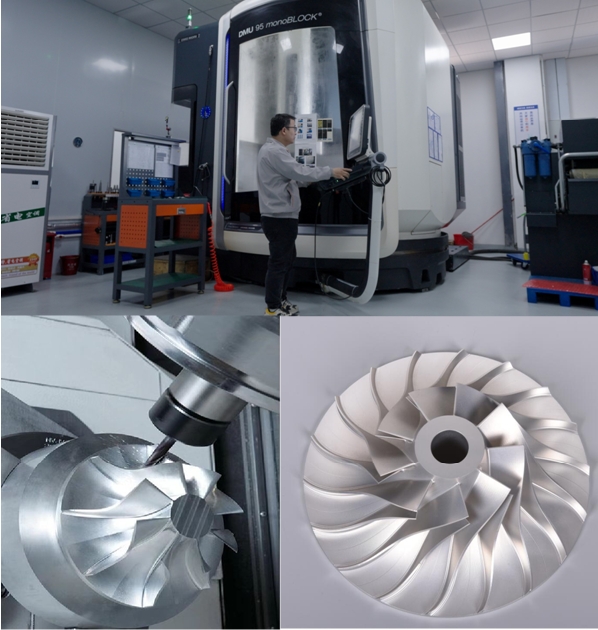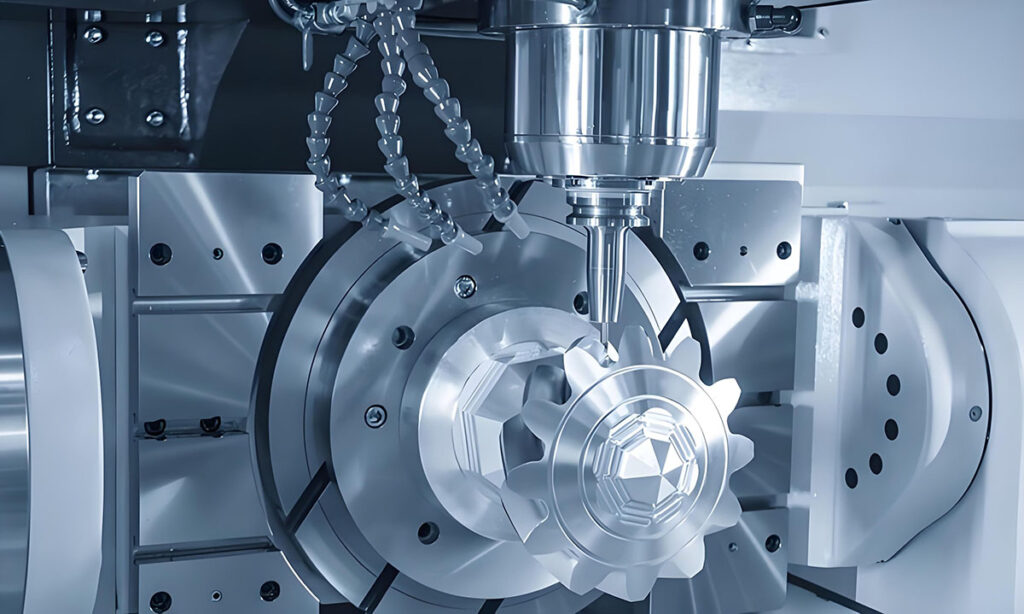Explore why Aerospace-grade machined components are vital in aviation and space industries. Learn about their materials, precision, and applications.
Introduction to Aerospace-grade Machined Components
Aerospace components are not your everyday metal parts. They’re built for extremes—extreme altitudes, speeds, temperatures, and expectations. These parts have to be incredibly light but also super strong. Even the smallest bolt or bracket must meet incredibly tight tolerances.
So, what makes a part “aerospace-grade”? For starters, the materials must resist corrosion, fatigue, and intense thermal stress. Then, the manufacturing process needs to be nothing short of flawless. And it all has to meet global certifications like AS9100.
The importance of aerospace-grade components cannot be overstated. They ensure the safety of millions of airline passengers daily, help spacecraft reach orbit, and even support drones during high-speed surveillance missions. When these parts work perfectly, no one notices. But if something goes wrong, the consequences can be dire.
That’s why aerospace machining is one of the most respected—and demanding—fields in modern manufacturing. These components are often custom-built, using exacting standards that leave no room for shortcuts. Whether it’s a jet engine blade or a satellite part, each piece must fit perfectly and function without fail. The demand for precision has led to the rise of advanced manufacturing technologies, especially CNC machining.
In this article, we’ll journey through the exciting and exacting world of aerospace manufacturing, breaking down the key techniques, materials, challenges, and innovations that define this cutting-edge industry. So buckle in—this is where aerospace dreams are made reality, one micrometer at a time.
Advanced CNC Machining Techniques for Aerospace Parts
When you’re building parts for the sky and beyond, you can’t settle for basic machining. That’s where advanced CNC techniques come in.
5-axis CNC machining is the gold standard in aerospace. It allows simultaneous movement in multiple directions, creating intricate geometries in a single setup. This not only boosts efficiency but ensures accuracy that’s almost impossible with older machines.
Wire EDM (Electrical Discharge Machining) is used for incredibly fine cuts in hard metals. Think fuel nozzles or tiny sensor housings.
Swiss machining, originally used for watch parts, is perfect for small aerospace components like pins and spacers. Its tight tolerances and smooth finishes make it a go-to choice.
Precision milling e high-speed turning round out the toolbox. Each method is chosen based on the material, part complexity, and end-use requirements.
These technologies help reduce human error and increase part consistency, which is a must in aerospace settings. But that’s not all—CNC machining also speeds up production and improves material usage, making it both efficient and eco-conscious.
Advanced CNC programming also includes simulations and real-time monitoring, so machinists can catch errors before they happen. It’s a smart fusion of software, mechanics, and human expertise that turns aerospace-grade raw materials into top-tier components that can handle the skies and beyond.

Key Materials Used in Aerospace-grade Components
Aerospace parts are only as strong as the materials they’re made from. That’s why selecting the right one is critical. Aerospace components need to be lightweight, durable, heat-resistant, and corrosion-resistant. These aren’t your everyday materials—they’re high-performance alloys specifically designed for flight and space.
| Materiale | Proprietà | Typical Use |
| Titanio | Lightweight, corrosion-resistant, high strength-to-weight ratio | Engine parts, landing gear |
| Leghe di alluminio | Easy to machine, cost-effective, decent strength | Structural components, housings |
| Inconel (Nickel-based alloys) | Extreme heat resistance, tough to machine | Turbine blades, exhaust systems |
| Acciaio inox | Durable, corrosion-resistant | Brackets, sensors, connectors |
| Composites (Carbon fiber) | Very light, strong, non-metallic | Radomes, fuselage panels |
Machining these materials isn’t a walk in the park. Titanium and Inconel are notoriously hard on cutting tools, generating heat and wearing out tools quickly. That’s why machinists use custom tooling, coolant systems, and reduced cutting speeds to handle them.
Each material has a unique “personality” when it comes to machining. Understanding how they behave during cutting helps manufacturers maintain accuracy and extend tool life—two things that matter immensely in aerospace applications.
Tolerances and Quality Standards in Aerospace Machining
In aerospace, perfection isn’t a goal—it’s a requirement. Tight tolerances are the norm, not the exception. That means a part must be machined to fit within the smallest possible margin of error. We’re talking tolerances often tighter than ±0.001 inches.
Aerospace-grade machined components are subject to rigorous standards like:
- AS9100: A widely adopted quality management standard for the aerospace industry.
- ISO 9001: Ensures consistent quality across production.
- NADCAP Certification: Specifically focuses on special processes like heat treating and non-destructive testing.
- FAA Compliance: Critical for commercial flight parts.
These certifications ensure that every component meets performance and safety standards. They also make it easier for aerospace OEMs to trust their suppliers. To meet these standards, manufacturers use:
- Coordinate Measuring Machines (CMMs): To inspect geometries with pinpoint accuracy.
- First Article Inspections (FAI): Required to validate the first part of every new production run.
- Non-destructive Testing (NDT): To find flaws without damaging the component.
Quality assurance isn’t just about ticking boxes—it’s about trust. After all, lives depend on these components every time a plane takes off.
Design Considerations for Aerospace Machined Parts
Designing for aerospace isn’t just about making something that fits—it’s about optimizing for performance, weight, and safety.
One of the biggest goals? Lightweighting. Every gram saved in an aircraft can reduce fuel consumption and emissions. That’s why materials like titanium and carbon fiber are so valuable.
Another factor is tolerance control. Aerospace parts often require fits within ±0.002 mm. These tolerances help ensure reliability under vibration, pressure, and temperature changes.
Designers also have to think about thermal expansion, vibration damping, and structural integrity. For example, a bracket that seems simple might need internal ribs or fillets to prevent fatigue cracks over time.The key is to balance strength and weight without sacrificing performance.
CAM software turns digital designs into machine-readable code. With these tools, engineers can create intricate surfaces and verify them before a single cut is made. This reduces rework, improves surface finish, and boosts part accuracy.
- Design ultra-complex parts with millimeter-level detail
- Simulate cutting paths and identify errors before machining begins
- Optimize material usage and minimize machining time
- Program multi-axis CNC machines with custom instructions
Top CAD/CAM platforms like Mastercam, Siemens NX, and Fusion 360 are staples in aerospace shops. They empower machinists to push the limits of what’s possible, from designing complex turbine blades to fabricating micro-scale satellite connectors.
Surface Finishing Techniques for Aerospace Parts
Surface finish isn’t just about looks—it’s about functionality, durability, and aerodynamics. In aerospace, finishing can affect everything from airflow to corrosion resistance. Here’s a look at some of the most commonly used surface treatments:
| Technique | Scopo | Common Use |
| Anodizzazione | Enhances corrosion resistance and surface hardness | Aluminum aircraft parts |
| Passivazione | Removes contaminants to prevent corrosion | Stainless steel fasteners |
| Shot Peening | Improves fatigue life by inducing compressive stress | Gears, engine components |
| Elettrolucidatura | Improves micro-finish and removes burrs | Medical and precision aerospace parts |
| Plasma Spraying | Adds thermal protection layers | Turbine blades |
Each finishing method must align with both the material and its function. For instance, a component meant for high heat must resist oxidation, while one for structural load might need increased fatigue strength. Machining experts consider these requirements early in the process to ensure compatibility.
Challenges in Manufacturing Aerospace-grade Components
Let’s be honest: making aerospace parts isn’t easy. It’s one of the most demanding fields in manufacturing. Here are the main challenges:
- Extreme Material Properties: Aerospace metals like Inconel or titanium are tough, but their hardness makes machining a chore. Cutting tools wear out fast, and heat buildup can warp parts.
- Tight Tolerances: Even a thousandth of an inch can mean the difference between success and failure. Precision is non-negotiable.
- Complex Geometries: Parts often need internal channels, compound angles, or tight radii. These require multi-axis machining and careful planning.
- Regulatory Compliance: Certifications like AS9100 or FAA compliance require thorough documentation, inspections, and traceability.
- High Cost of Mistakes: Scrap material isn’t just a cost—it can lead to production delays or even safety concerns.
Experienced machinists overcome these challenges by leveraging simulation software, high-performance tooling, and collaborative planning between engineers and machinists. Smart strategies and the right equipment make success possible.
Applications of Aerospace-grade Machined Components
Aerospace-grade machined components serve as the unseen backbone in every airborne and space-bound marvel. These parts find their way into:
- Jet Engines: From turbine blades to fuel system components, all must endure extreme temperatures and pressures.
- Avionics Systems: Tiny but mighty connectors, enclosures, and brackets are all precision-machined for accuracy and safety.
- Landing Gear Systems: These components face enormous impact loads and need exceptional strength.
- Fuselage and Wings: Structural components machined from aluminum or titanium enhance the aircraft’s strength-to-weight ratio.
- Satellites and Spacecraft: Lightweight parts that endure vacuum and radiation must meet extraordinary precision demands.
In defense applications, these components play roles in unmanned aerial vehicles (UAVs), missiles, and surveillance systems. It’s no exaggeration to say the performance of an entire aircraft often hinges on how well its machined parts are made. Without them, none of the high-flying feats we’ve come to admire would be possible.
Future Trends in Aerospace Machining
The sky’s not the limit—it’s just the beginning. Aerospace machining continues to evolve. Let’s peek into the future:
- AI-Powered Machining: Predictive algorithms that adjust feeds and speeds in real-time are becoming standard.
- Hybrid Manufacturing: Combining CNC machining with 3D printing allows for faster prototyping and complex part design.
- Digital Twins: Virtual models of physical parts are being used to optimize manufacturing and maintenance.
- Sustainable Machining: Coolant recycling, reduced material waste, and green energy practices are becoming more widespread.
- Nano-Machining: With miniaturization booming, precision at the nanoscale is becoming increasingly relevant.
As the aerospace industry expands into commercial space flight and advanced UAVs, machining processes must keep up. Staying ahead means adapting to these innovations.
Why Choose a Reliable Aerospace Machining Partner?
Not every machine shop can deliver aerospace-grade quality. Choosing the right partner is essential.
A good aerospace supplier offers more than just machining—they provide engineering support, material sourcing, and end-to-end quality control.
Look for shops with clean facilities, modern equipment, and experience with aerospace contracts. Case studies, customer testimonials, and audit results can help separate the pros from the pretenders.
A strong partner will help you streamline design, reduce costs, and meet tight deadlines without compromising on quality.

Here is A Reliable Aerospace Machining Partner for You
In the aerospace industry, reliability isn’t optional—it’s a mandate. That’s why companies around the world trust SYM Lavorazione di precisione as their go-to partner for aerospace-grade machined components.
Why SYM Stands Out in Aerospace CNC Machining
SYM Precision Machining combines cutting-edge technology with years of expertise to meet the demanding requirements of the aerospace sector. Here’s what makes SYM a trusted aerospace machining partner:
- Certified Quality Systems:
SYM operates under strict quality management systems, including ISO 9001:2015 and aerospace-specific protocols. Every aerospace component goes through a rigorous inspection process using high-precision CMMs, ensuring consistent quality and full traceability. - Advanced Equipment for Complex Parts:
From 5-axis CNC milling a multi-tasking turning centers e wire EDM, SYM’s workshop is equipped with the advanced machinery needed to handle complex aerospace geometries and ultra-tight tolerances. - Expertise in Aerospace Materials:
SYM has deep experience machining aerospace-grade materials such as Titanio, Inconel, Aluminum 7075/6061, and Stainless Steel 17-4PH. The team understands how to machine these high-performance alloys while maintaining dimensional accuracy and surface integrity. - Strict Tolerance Control:
Aerospace parts often require tolerances within ±0.005 mm. SYM delivers with precision, thanks to in-process inspection, professional toolpath programming, and climate-controlled environments that minimize dimensional variation. - Responsive Engineering Support:
SYM’s engineers work closely with clients during the DFM (Design for Manufacturability) stage, offering valuable suggestions that improve part performance and manufacturability while controlling cost and lead time. - Flexible Production Volume:
Whether you need a single prototype for testing or 500+ production units for an aerospace assembly line, SYM can scale its services without compromising quality or lead time. - Comprehensive Documentation & Compliance:
Aerospace projects demand documentation such as First Article Inspection (FAI) reports, material certifications, and traceability records. SYM provides full documentation packages as part of its standard process for aerospace customers.
Real-World Aerospace Applications
SYM has successfully machined components used in:
- Satellite subsystems
- Drone propulsion systems
- Avionics housings
- Aircraft interior structural supports
- Engine brackets and cooling systems
Each component is crafted with the highest level of attention to ensure it performs reliably in mission-critical applications.
Global Aerospace Customer Trust
SYM serves aerospace clients across the U.S., Europe, and Asia, offering fast communication, on-time delivery, and responsive after-sales support. With English-speaking sales engineers, quick quote turnaround, and international logistics experience, SYM removes friction from global supply chains.
If you’re seeking a reliable aerospace machining partner who understands the precision, compliance, and performance expectations of the industry, SYM Lavorazione di precisione is the supplier you can count on—from prototype to production.
Domande frequenti
What materials are most commonly used in aerospace CNC machining?
Titanium, aluminum alloys, stainless steel, Inconel, and carbon fiber composites are the most common due to their strength and light weight.
Why is precision so important in aerospace components?
Even the smallest dimensional error can cause a failure in high-stress environments, which could be catastrophic in flight or space.
How does CNC machining help in aerospace manufacturing?
It allows for the production of complex, tight-tolerance parts quickly and repeatably, ensuring quality and performance.
Is aerospace machining more expensive than regular machining?
Yes, due to tighter tolerances, higher-grade materials, complex geometries, and strict compliance regulations.
Can 3D printing replace CNC machining in aerospace?
Not entirely. While additive manufacturing is useful for prototyping or certain designs, CNC machining remains the gold standard for strength and accuracy.
What certifications are required for aerospace machining companies?
Certifications like AS9100, ISO 9001, NADCAP, and FAA approval are essential for ensuring quality and regulatory compliance.
Conclusione
Aerospace-grade machined components are more than just parts—they’re lifelines in a world where reliability is everything. From selecting the right materials to using advanced CNC techniques, each step is crucial. Whether it’s a turbine blade or a satellite bracket, these components represent the peak of human engineering.
As we continue to explore new frontiers, from commercial space travel to hypersonic flight, precision aerospace machining will remain a cornerstone of innovation. It’s not just about metal and machines—it’s about the future we’re building, one perfect part at a time.



